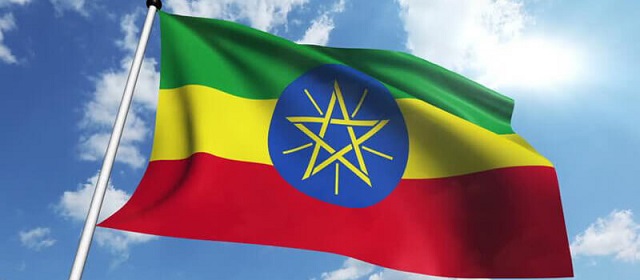By Nora Hamerman
Special to the Mirror-Spectator
BALTIMORE — A new exhibit at Baltimore’s Walters Art Museum, titled “Ethiopia at the Crossroads,” is not only a delight for the eye and mind, but it also sheds light on a little-known relationship between the two oldest nations to have embraced Christianity, some 1,700 years ago. The show, which will also travel to the Peabody-Essex Museum in Salem, Mass. and the Toledo Art Museum in Ohio, reveals that Armenia and Ethiopia enjoyed close ties over the centuries that are visible in the two countries’ art.
One of the thrills of the Baltimore exhibit is a chance to see the Gospel decorated by Armenia’s most celebrated medieval book illuminator, Toros Roslin, who was active in the mid 1200s at the monastery of Hromkla, in Cilicia, now southern Turkey. This precious possession of the Walters Museum was not loaned to “Armenia!” — the exhibition at New York’s Metropolitan Museum five years ago — but now you can see it side by side with an Ethiopian Gospel book at the Walters show.
Read also
The Toros Roslin Gospel of 1262 (MS W.539) is not only the most lavishly decorated among the signed works of Roslin, but the only complete one in the United States. The manuscript was kept in the ancient trading hub of Sivas (Sepastia, formerly part of Armenia Minor, now Turkey) since the 17th century where it remained until the Armenian genocide in 1919. Ten years later it was purchased by American rail magnate Henry Walters in Paris. Walters, founder of the Walters Art Museum, had long been interested in Armenian art, but his passion was rekindled by the tragic events of the previous decade.
In the new exhibition “Ethiopia at the Crossroads” at the Walters Art Museum in Baltimore, ancient texts and other artifacts are displayed alongside more contemporary artworks to show the exchange of ideas among cultures and across time. Photo courtesy of Walters Art Museum.
In the first gallery of the exhibit, titled “Ethiopia at the Crossroads” (the name invokes Ethiopia’s unique geographical position between Africa, Asia and Europe) there is a modern painting by Skunder Boghossian, an Ethiopian-Armenian painter and art teacher who worked mainly in the United States and was one of the first Black artists from the African continent to gain international attention and acclaim.
Armenia adopted Christianity in 301 CE, followed by Ethiopia in the 320s, about a decade after the Emperor Constantine legalized Christian worship in the Roman Empire in 313. The relationship between the two countries, despite their distance in geography, began very early. Not only do the Armenian and Ethiopian alphabets show some visual similarities, but some scholars think that when Armenian script was codified in 406, a few characters were borrowed from Ethiopic.
The exhibition catalogue explains the Armenian trade routes into Africa were far earlier and more extensive than previously believed, beginning as early as the fourth century CE. Another way that artistic and theological ideas were exchanged was the fact that Ethiopian and Armenian clerics lived side by side caring for holy sites in places like Jerusalem. Manuscripts, textiles, and small devotional and liturgical objects went back and forth.
In Jerusalem, the Ethiopian and Armenian artists shared an early emphasis on the symbolism of the cross. Indeed, the very earliest signs of Ethiopia’s new Christian faith in the fourth century are coins minted under the first Christian Emperor which at first show a crescent moon, and then are suddenly marked with crosses. (Crucifixes, showing the body of the Crucified Christ on the cross, came much later, under Western influence.)
Two kinds of religious artifacts make the relationship between Ethiopia and Armenia especially clear:. One is the canon tables in Gospel books; the other is Healing Scrolls.
Canon tables were a system of dividing the Four Gospels of Matthew, Mark, Luke and John, before the modern system of chapters and verses came along in the 13th and 16th centuries. The tables showed the concordances among the different accounts side-by-side. The canon tables of Toros Roslin and the Ethiopic example in the exhibit both show colorful birds surmounting the arched frames of the tables and strikingly similar geometric designs decorating the columns.
Healing Scrolls were a form a private devotion to heal the sick and ward off evil spirits. As curator Christine Sciacca explains, the scrolls from Ethiopia were usually the same height as the person invoking the spiritual power of the scrolls, whereas the Armenian scrolls were often very long. In both cases the invocation of magical powers in the scrolls was frowned upon by religious authorities, but the inclusion of pictures of beloved saints (especially St. Sarkis, one of the most popular Armenian saints) and scenes from the life of Jesus made them acceptable.
The exhibit, which opened on December 3, 2023, will go through March 3, 2024.




























































